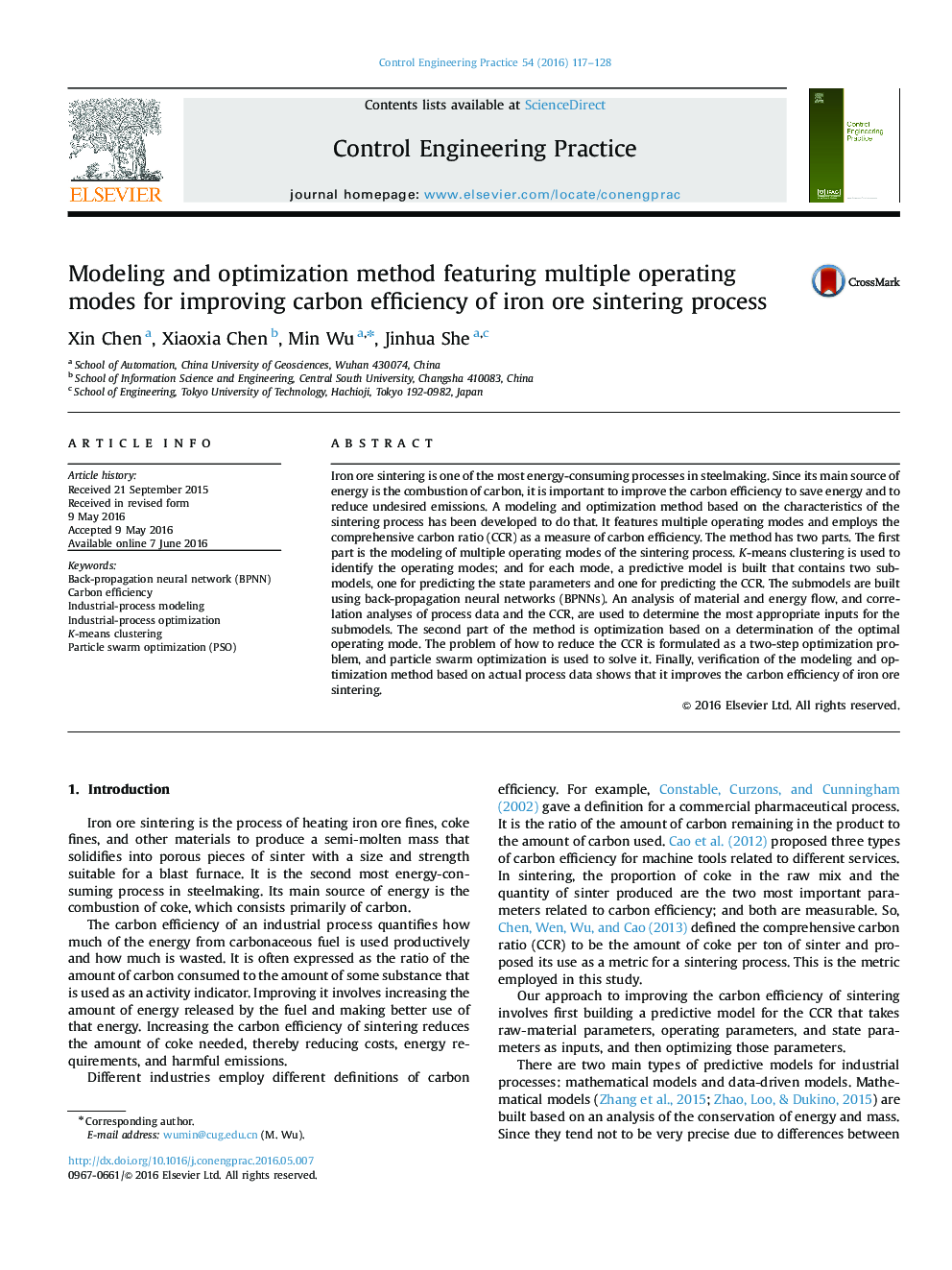| Article ID | Journal | Published Year | Pages | File Type |
|---|---|---|---|---|
| 699624 | Control Engineering Practice | 2016 | 12 Pages |
Iron ore sintering is one of the most energy-consuming processes in steelmaking. Since its main source of energy is the combustion of carbon, it is important to improve the carbon efficiency to save energy and to reduce undesired emissions. A modeling and optimization method based on the characteristics of the sintering process has been developed to do that. It features multiple operating modes and employs the comprehensive carbon ratio (CCR) as a measure of carbon efficiency. The method has two parts. The first part is the modeling of multiple operating modes of the sintering process. K-means clustering is used to identify the operating modes; and for each mode, a predictive model is built that contains two submodels, one for predicting the state parameters and one for predicting the CCR. The submodels are built using back-propagation neural networks (BPNNs). An analysis of material and energy flow, and correlation analyses of process data and the CCR, are used to determine the most appropriate inputs for the submodels. The second part of the method is optimization based on a determination of the optimal operating mode. The problem of how to reduce the CCR is formulated as a two-step optimization problem, and particle swarm optimization is used to solve it. Finally, verification of the modeling and optimization method based on actual process data shows that it improves the carbon efficiency of iron ore sintering.
